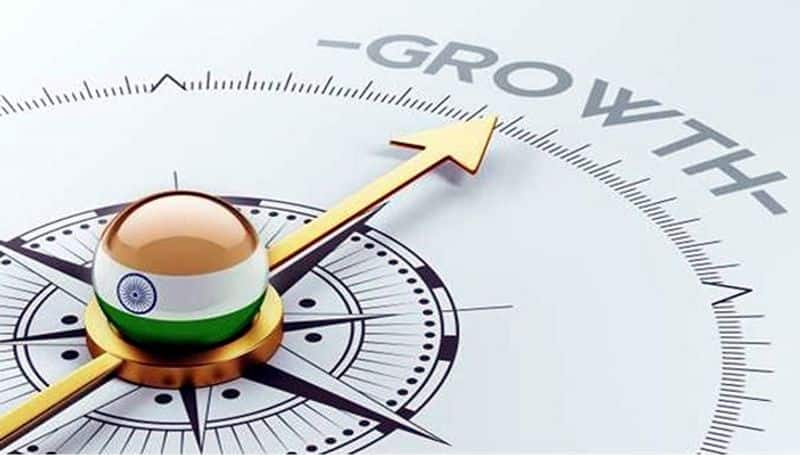Until the Modi government, India's policymakers had little idea where the projects stood internationally and how the states fared in the competition of executing the policies with one another; this is a good practice the current dispensation has begun, which will leave behind a legacy of healthy endeavour to excel
In a 2013 annual letter for the Bill & Melinda Gates Foundation, Bill Gates wrote, “I have been struck again and again by how important measurement is to improving the human condition. You can achieve amazing progress if you set a clear goal and find a measure that will drive progress toward that goal-in a feedback loop”.
One of the changes in India’s approach to policy changes in the Narendra Modi era has been to use rankings and measurements as a way to bring about specific changes. For domestic as well as international signalling, the Modi government has used the allure of rankings to define its policy goals.
NITI Aayog has been the chosen body for creating a sense of competition across states, districts, and officials on various parameters. Various government departments have however used the construct.
Swachh Bharat Abhiyan measurements on open defecation free regions were the first to take off. The Power Ministry extended the measurement approach and created a ‘retail’ view of what used to be a government to business or government to government activity. Portals and apps were created to bring transparency to village electrification, LED bulb distribution, and transmission line installation programs among others.
Smart Cities selection via a ranking process was the first big national ranking program. By 'gamifying' the selection process, each nominated city was forced to a standard set of activity as well as implement new ideas to win the bragging rights of being Smart. NITI Aayog also developed a ranking of states on social sector key performance indicators (KPIs).
The organisation also created a detailed view of India’s 115 most backward districts called the Aspirational Districts. The data views created on various parameters also indicate what improvements have to be brought about in these districts for them to catch up with the more developed areas.
This ranking based governance with elements of gamification was initially criticized by various quarters. Regular commentators called some of it gimmicky. Even states argued about being ranked on everything and the associated pressure of looking good. But over time, most of this approach seems to have been accepted. The approach puts the spotlight on the administrative officers, who are implementing various governance programs. The reports they have to send to the political leaders governing the state are now distilled for very specific information.
Perhaps there could be an element of ‘dressing up’ data when collected bottom up. Nonetheless, as the NITI Aayog and other agencies refine the designs, the ranking approach can be steered towards updating the KPIs and improving the measures for each.
The harder push for ranking driven policy improvement has been in the international arena. Two international rankings especially stand out.
The first is the Ease of Doing Business (EODB) by the World Bank. When the Modi government assumed office, India was languishing in the 140s in this ranking. Modi set a target of breaking into top 50 in the world. In the latest rankings released on October 31, 2018, India had climbed to 77th place, an improvement of 65 places in the four years of this government.
India jumped from 130 to 100 and 100 to 77 in the last two years. The EODB ranking takes into account a specific set of measures. A country can improve its rank by focusing on reforming the underlying processes which govern these measures.
Between 2017 and 2018, India jumped 129 places on ease of giving out construction permits (181 to 52), 66 places on trading across borders (146 to 80), and 19 places (156 to 137) on starting a business. Similarly, India made noticeable qualitative improvements in paying taxes, led by the Goods and Services Tax implementation, though the rank did not change much on this parameter. India had already jumped significantly on credit inclusion and getting electricity between 2016 and 2017.
India along with Djibouti made the list of top 10 improved countries on EODB in 2018 as well as 2017. To break into top 50 next year, India would have to show improvements in areas like registration of properties, paying taxes, enforcing contracts, and resolving insolvency. The last one seems covered for next year, with the Insolvency and Bankruptcy Act led bankruptcy resolutions.
It is true that no investor comes to a country with expansion plans solely for a standalone ranking. Business plans, potential, and long-term strategy are much more important. But EODB rank is a good directional indicator, especially because it measures very specific operational details relevant to most businesses.
In the same vein, another international ranking where India has significantly improved but probably does not get talked about as much as EODB is the Global Competitive Index (GCI). Published annually by the World Economic Forum (WEF), the index focuses on twelve different pillars — institutions, infrastructure, macroeconomic environment, health and primary education, higher education and training, goods markets efficiency, labour market efficiency, financial market development, technological readiness, market size, business sophistication, and innovation.
The GCI themes deal with more abstract concepts compared to the EODB coverage. India ranked 58th in the latest GCI report, improving 5 places from 2017. Another year of similar improvement as demonstrated this year would put India around the 50th place in this ranking as well. This year India was ranked the highest amongst all BRICS countries (Brazil, Russia, India, China, South Africa) on the quality of institutions (rank 47), considered a basic building block for the GCI ranking. India also ranked very high on airport connectivity (rank 4), embracing technology (rank 11), financing small businesses (rank 16), and budget transparency (rank 18).
There are two common negatives which stand out in international rankings — India’s ability to enforce contracts and various health and education indicators. The former is a complex area to solve, given the strained relationships between the legislative and the judicial branches of the government. The legislative branch has worked on areas like improving commercial disputes resolution but, clearly, that’s not enough. The issues with health and education indicators are intuitive and are easily corroborated by the NITI Aayog data. There is a long way to go for the country to improve human development indices. The disparity between rich and poor states is also glaringly high on this count.
The fascination with leaderboards can sometimes take the focus away from the hard grind of governance overhaul. Nonetheless, Modi government’s data-driven view on identifying what needs to change and who to hold accountable for these changes has indeed helped in specific policy and process improvements.
The key to long-term success of this approach is to make the world of rankings constructively competitive and not a reductionist exercise.
Last Updated Nov 12, 2018, 5:16 PM IST











![Salman Khan sets stage on fire for Anant Ambani, Radhika Merchant pre-wedding festivities [WATCH] ATG](https://static-ai.asianetnews.com/images/01hr1hh8y86gvb4kbqgnyhc0w0/whatsapp-image-2024-03-03-at-12-24-37-pm_100x60xt.jpg)
![Pregnant Deepika Padukone dances with Ranveer Singh at Anant Ambani, Radhika Merchant pre-wedding bash [WATCH] ATG](https://static-ai.asianetnews.com/images/01hr1ffyd3nzqzgm6ba0k87vr8/whatsapp-image-2024-03-03-at-11-45-35-am_100x60xt.jpg)



